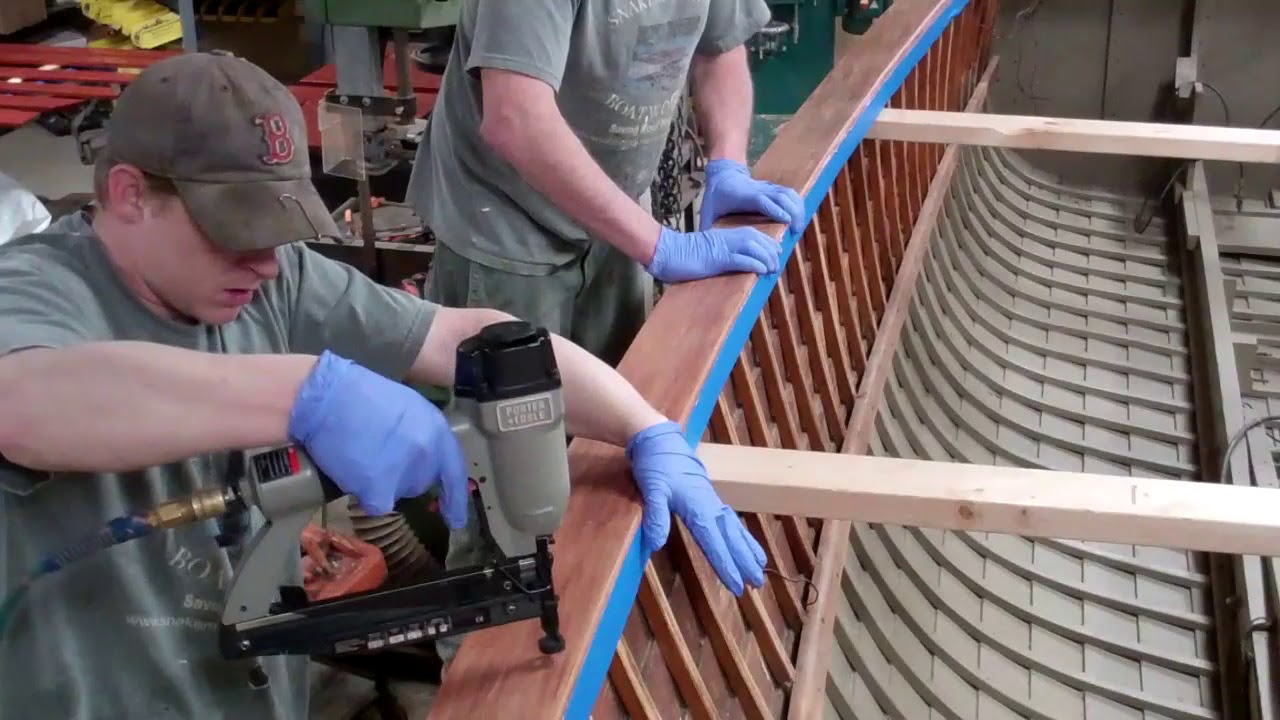After a long winter of scrubbing, scrubbing and scrubbing the bilge and the hull’s related interior surfaces; spending endless hours applying Sandusky Lyman Sand Tan Bilge paint to all those surfaces, it is time to deck.
We are installing ribbon cut mahogany plywood that matches that Lyman originally used in its Sandusky, OH factory.
We use 3M5200 to minimize the need for fasteners. In fact, in for foredeck, other than along the rub rails, where they will be covered by the toe rails, down the middle where they will be covered by the king plank and the stainless finish nails driven along the dash, there are no additional fasteners driven anywhere through the surface.
Bending the panels over the framework produces all the down pressure needed to ensure significant squeeze out, which indicates the substantial downward pressure being generated there. The covering boards are also bedded in 3M5200 and secured with stainless finish nails driven in using a pneumatic nailer, which is also consistent with Lyman’s methodology.
We employ 3M5200 in three colors. White is used along the rub rail, which produces a white seam between the top strake and rub rail.
Mahogany is used along the top of gunwale framing so that the interior seam between it and the covering board complements the stain and brite finish being applied to these components.
Tan is used atop all of the deck framing, which, along with the undersides of the deck panels, has been painted Lyman Sand Tan. The tan seam lines melt into the surrounding tan surfaces.
As will all other 3M5200 applications, we employ Interlux Brushing Liquid 333 and terrycloth shop towels to clean all squeeze out aggressively and completely. Left behind is the tiniest seam line we can attain.
Once we install the toe rails on the foredeck and the king planks, both fore and aft, her decks and covering boards will be ready for bleaching, staining and, yes, varnish!
Quite a milestone indeed!

